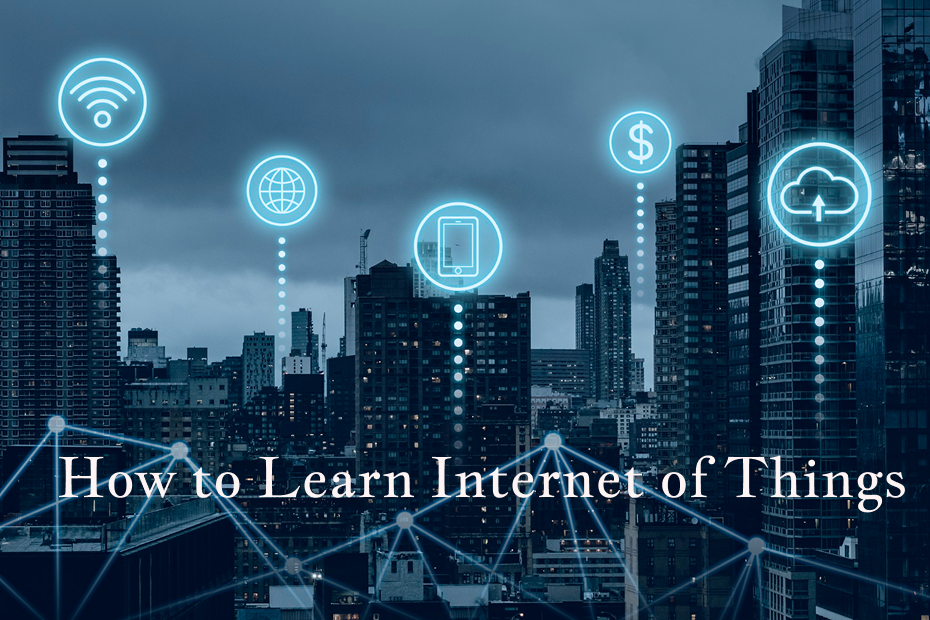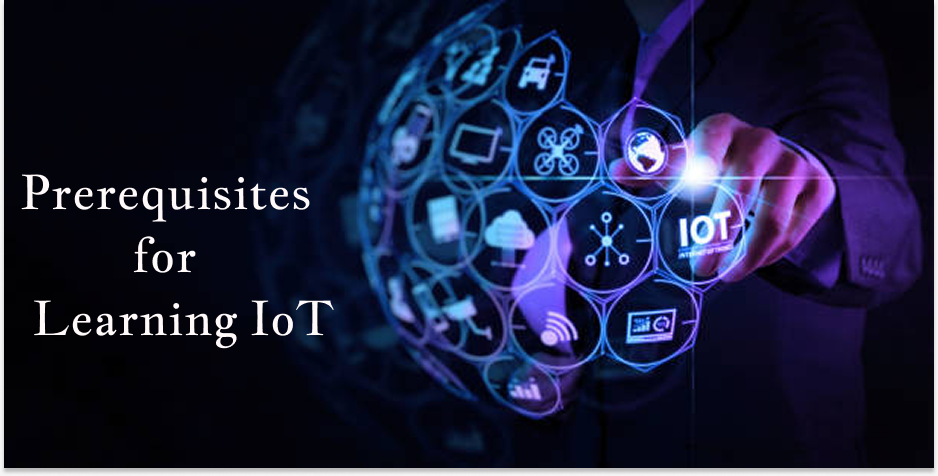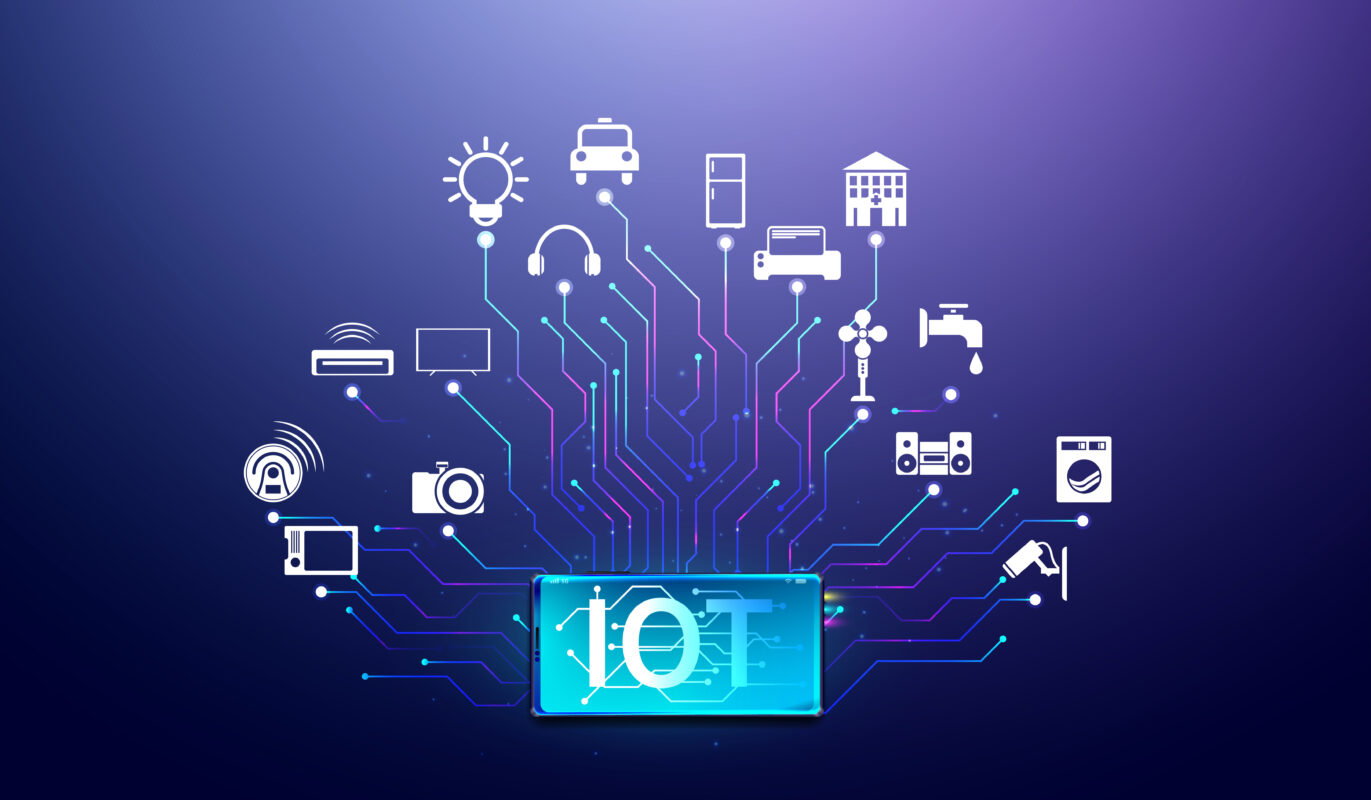IoT for Beginners-How to Learn IoT Step by Step

IoT is revolutionizing almost every field, from healthcare to agriculture; IoT has become an essential part of all devices. It has become a significant part of our daily use devices. IoT is transforming the world by making devices more intelligent and efficient.
This rapid and amazing transformation has also made people eager to learn about IoT, but they are unaware of how to learn it. IoT for beginners can first seem difficult and challenging, but when learned by following the proper steps, it becomes the most easy thing.
In this guide on IoT for beginners, we will explore what IoT is, how it works, and how to learn IoT as a beginner step by step.
What is IoT
The Internet of Things (IoT) is a network of physical devices that are connected to the Internet to collect and share data with other devices over the IoT network. The main purpose of IoT is to create smart devices and objects with increased efficiency and automation. The connected devices collect and exchange the data, perform real-time monitoring on the network without the need of constant human input.
Core Components of IoT
- Devices/Sensors: are the physical objects/devices that collect data from the environment.
- Connectivity: enables communication between devices and allows them to send and receive data.
- IoT Gateways: connects sensors to the cloud, manage bidirectional traffic, and ensures interoperability between sensors and connected devices.
- Cloud Platforms: are the central hub of IoT systems; they collect, manage, store, and process the data.
- Data Processing: analyze and convert the data into meaningful insights, it helps in making data-driven decisions.
- User Interface: is where the data is presented to the user and where the user interacts with the IoT system.
How Does IoT Work?
IoT works on the basis of its core components:
Devices/Sensors collect the data from their environment, the collected data is then transmitted through connectivity to the IoT devices, the IoT gateways then connect sensors with the cloud platforms. On the cloud platforms, the data is collected, stored, analyzed, and processed. When the data is properly analyzed then the IoT device can make smart decisions and perform the desired action, and then the user can also interact with the IoT devices.
Prerequisites for Learning IoT
When learning IoT for beginners, there are some prerequisites that you need to know before starting. Having knowledge of these prerequisites will make your learning process easy. Let’s take a look at what those prerequisites are:
- Programming languages, preferably those that are mostly used for IoT projects, e.g, C, JavaScript, Python, etc.
- Electronics basics, e.g., circuits, sensors, microcontrollers, etc.
- Computer networking, how different networks work, and how to connect them e.g. Wi-Fi, Bluetooth, etc.
- IoT development frameworks, e.g, Arduino IDE, Eclipse, etc.

Step-by-Step Guide to Learning IoT for Beginners
Now that you know the IoT and its basic components, let’s now see the steps involved in learning IoT for beginners:
Step 1: Understand the IoT Basics and Fundamentals
The first step is to learn the IoT basics and fundamentals. Having a solid knowledge of the basics will help you understand the IoT ecosystem more clearly. The basics involve learning about IoT components, how the IoT system works, the hardware, sensors,actuators , and the cloud platforms.
You can watch YouTube tutorials, read books, online blogs, documentation, and research papers. There are also some online courses related to IoT for beginners on platforms like Coursera, Udemy, and edX. Such platforms are great resources to learn IoT basics and fundamentals.
Step 2: Learn IoT Software & Programming
The next step is to learn about the software and programming languages used in IoT systems. C language is most commonly used in IoT projects, but now JavaScript and Python are also becoming popular in this field. Along with these three languages PHP, Java and Swift are being used. You can learn any of these languages; each language has its own application in IoT.
- C, C++ are best for working with microcontrollers.
- Python is good for data handling.
- JavaScript is best for developing IoT-based web applications.
You can start by learning any one and then learn other languages as well. But make sure to develop a strong grip on what you learn.
Besides coding, also learn about IoT platforms like Node-RED and Blynk for integration with mobile and web applications.
Having knowledge of working with simulation tools like MATLAB and Proteus will also be great. These tools allow you to test and debug IoT systems through virtual prototyping.
Step 3: Learn About IoT Hardware
The next step in IoT for beginners is to learn about the hardware devices used in IoT systems. For beginners, Arduino and Raspberry Pi are the best development tools to get started with IoT. They have built in features for connecting sensors and actuators and offer flexibility.
Having knowledge of cloud platforms like AWS IoT, Microsoft Azure etc will be very helpful in managing your projects. If you want to work on wireless IoT applications, then learn about ESP8266 and ESP32; these two are the best low-cost options for you.
A good knowledge of hardware tools is necessary so you can work and gain practical experience about IoT systems.
Step 4: Understand IoT Networking and Protocols
Learning about IoT networks and protocols is very necessary to understand how IoT devices are connected, share data, and how IoT protocols work. You can start by first learning basic connectivity with short range networks such as Wi-Fi or Bluetooth, and then learn about long-range networks such as 4G,5G,NB-IOT, etc.
There are different protocols used in IoT systems for messaging and communication between devices:
- For communication and data exchange, HTTP, MOTT, CoAP, AMQP, WebSocket etc are used.
- For connectivity, Wi-Fi, Bluetooth, Zigbee, LoRaWAN, cellular networks 4G, 5G etc are used.
Step 5: Learn Data Handling and Security in IoT
A big picture in IoT for beginners is to learn about data handling and security in IoT systems.
Learn how data is collected by sensors, managed, stored, and processed by cloud platforms.
This will help understand how the IoT system works in detail.
In addition to this, also learn about how to make data secure on IoT systems, the essential security techniques, e.g, encryption, authentication, network segmentation, secure boot, firmware updates etc. Security is important to protect data from vulnerable attacks. Learn about these security techniques and how to protect your IoT systems.
Step 6: Build your First IoT Project
When you have learned about the IoT system in detail, start building your first project. As a beginner, you should start with simple projects. For Example, a smart home project in which you will control your home appliances remotely or a weather monitoring system that tracks temperature and humidity inside your home.
Such projects will give you a better understanding of IoT systems as a beginner. When you have successfully built small projects, you can move toward building bigger projects.
These steps are one the best ways to learn IoT for beginners. When you have developed your skill as a beginner in IoT and gain partial experience, then move towards the next steps. Advance your knowledge about IoT, learn about AIoT, edge computing,LPWAN, etc. These are advanced domains in IoT that will polish your skills for becoming an IoT professional.

Learning IoT can be very helpful in the field of technology. It has applications in almost every field. In medicine, it is being used to make smart healthcare devices. In agriculture, it is being used to make devices that can help farmers to make informed decisions and devices that detect soil temperature and humidity. Now there are IoT devices that help businesses in process optimization and making data-driven decisions.
More IoT devices are underway for use in different fields, which means IoT is growing rapidly, and the need for IoT professionals will grow more in the future. So this is the time to learn IoT, it will not only keep you ahead in tech but will also pave your way for a promising career.
By following the right steps, paying attention, and giving proper learning time to each step, learning IoT for beginners will become very easy. Start with the fundamentals, explore the IoT hardware, software, and necessary protocols , and then move towards building your first IoT project. With consistent practice and effort, you will definitely become a great IoT professional one day.